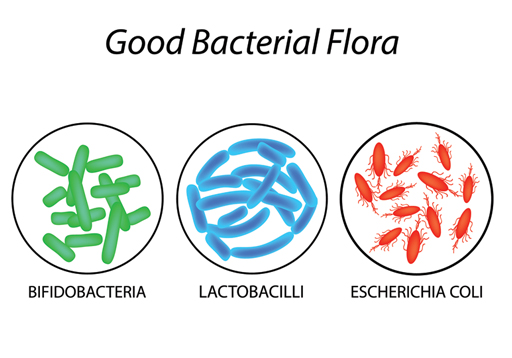4.3 Prebiotics and probiotics for good gut bacteria
There are trillions of bacteria in your gut, weighing up to 2 kg. They are essential in controlling processes and have a vital role in your digestive system. They also have a role in your immune system, inflammation, mental health, cardiovascular system, and metabolic health.
It can be easy to get confused with what prebiotics and probiotics are. So what is the difference?
There are over 400 bacterial species so far identified that live in human guts. They occur in low numbers in the stomach and upper intestine but are abundant in the lower bowel. They play a role in fibre digestion and synthesise certain vitamins (biotin and folate), as well as helping to absorb vitamin K.
Prebiotics literally means ‘before life’. Prebiotics are non-digestiblefood components that promote the ‘good’ bacteria such aslactobacilli and bifidobacteria. In other words, they are food for the bacteria and not live bacteria. Prebiotics are stable and reach the gut intact, feeding the good bacteria. They can trigger symptoms in people with IBS because they are oligosaccharides, Prebiotics should be avoided if you are following a low FODMAP approach.
Probiotics are the actual, live, ‘good’ bacteria. They can be affected by heat and enzymes as they pass down the gut, so have to be taken in adequate amounts. They compete against the resident microflora in the gut for colonisation sites.
It would seem ideal to take prebiotics and probiotics at the same time. These are called synbiotics because they contain both in the same preparation. More research is emerging to suggest that the gut bacteria are important to our health.

